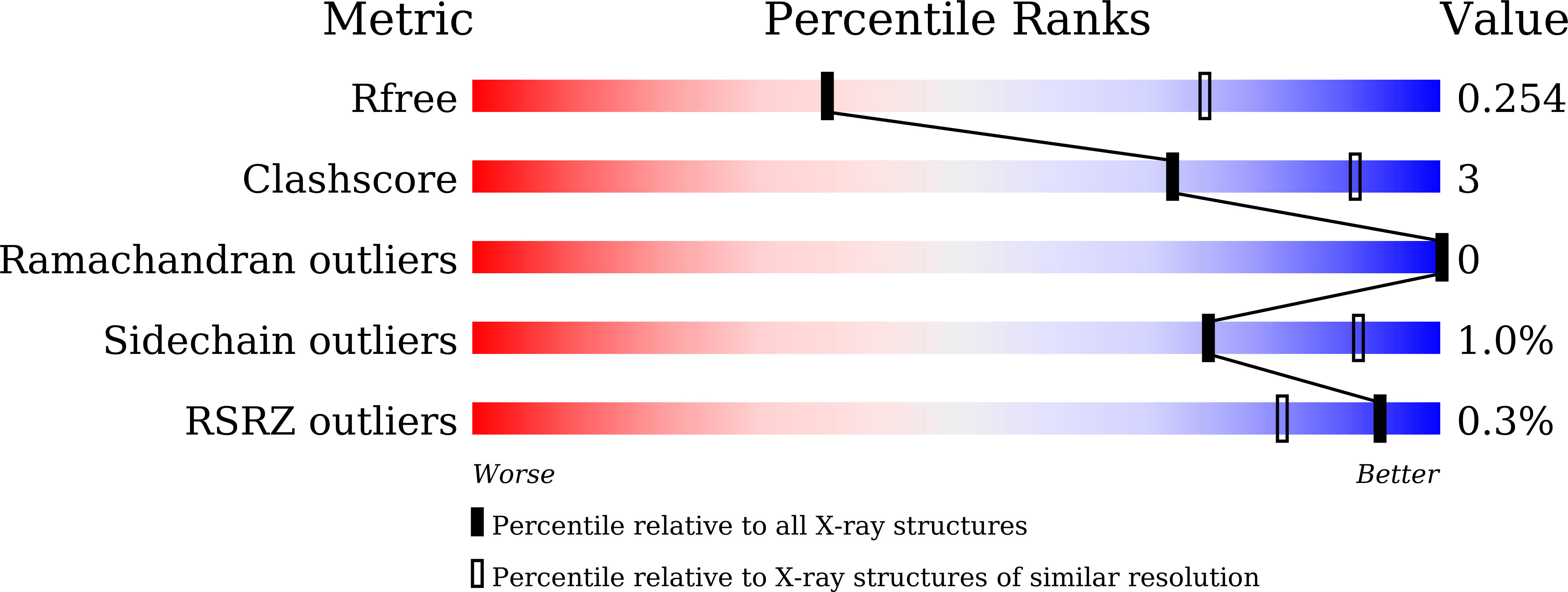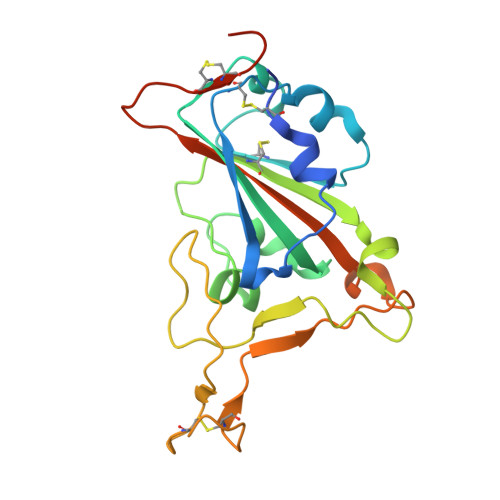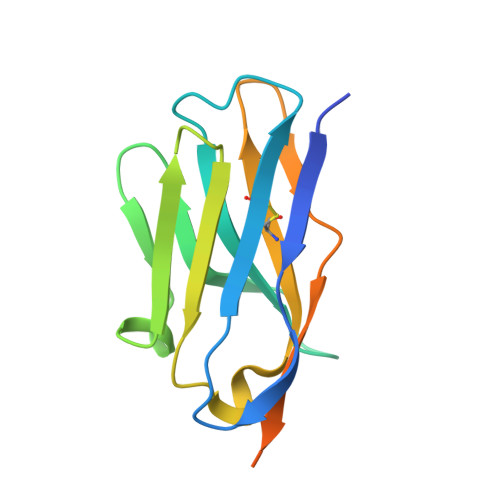Structural Characterization of a Neutralizing Nanobody With Broad Activity Against SARS-CoV-2 Variants.
Li, T., Zhou, B., Luo, Z., Lai, Y., Huang, S., Zhou, Y., Li, Y., Gautam, A., Bourgeau, S., Wang, S., Bao, J., Tan, J., Lavillette, D., Li, D.(2022) Front Microbiol 13: 875840-875840
- PubMed: 35722331
- DOI: https://doi.org/10.3389/fmicb.2022.875840
- Primary Citation of Related Structures:
7F5H - PubMed Abstract:
SARS-CoV-2 and its variants, such as the Omicron continue to threaten public health. The virus recognizes the host cell by attaching its Spike (S) receptor-binding domain (RBD) to the host receptor, ACE2. Therefore, RBD is a primary target for neutralizing antibodies and vaccines. Here, we report the isolation and biological and structural characterization of a single-chain antibody (nanobody) from RBD-immunized alpaca. The nanobody, named DL28, binds to RBD tightly with a K D of 1.56 nM and neutralizes the original SARS-CoV-2 strain with an IC 50 of 0.41 ¦̀g mL -1 . Neutralization assays with a panel of variants of concern (VOCs) reveal its wide-spectrum activity with IC 50 values ranging from 0.35 to 1.66 ¦̀g mL -1 for the Alpha/Beta/Gamma/Delta and an IC 50 of 0.66 ¦̀g mL -1 for the currently prevalent Omicron. Competition binding assays show that DL28 blocks ACE2-binding. However, structural characterizations and mutagenesis suggest that unlike most antibodies, the blockage by DL28 does not involve direct competition or steric hindrance. Rather, DL28 may use a "conformation competition" mechanism where it excludes ACE2 by keeping an RBD loop in a conformation incompatible with ACE2-binding.
Organizational Affiliation:
State Key Laboratory of Molecular Biology, Chinese Academy of Sciences Center for Excellence in Molecular Cell Science, Shanghai Institute of Biochemistry and Cell Biology, Chinese Academy of Sciences, Shanghai, China.


















